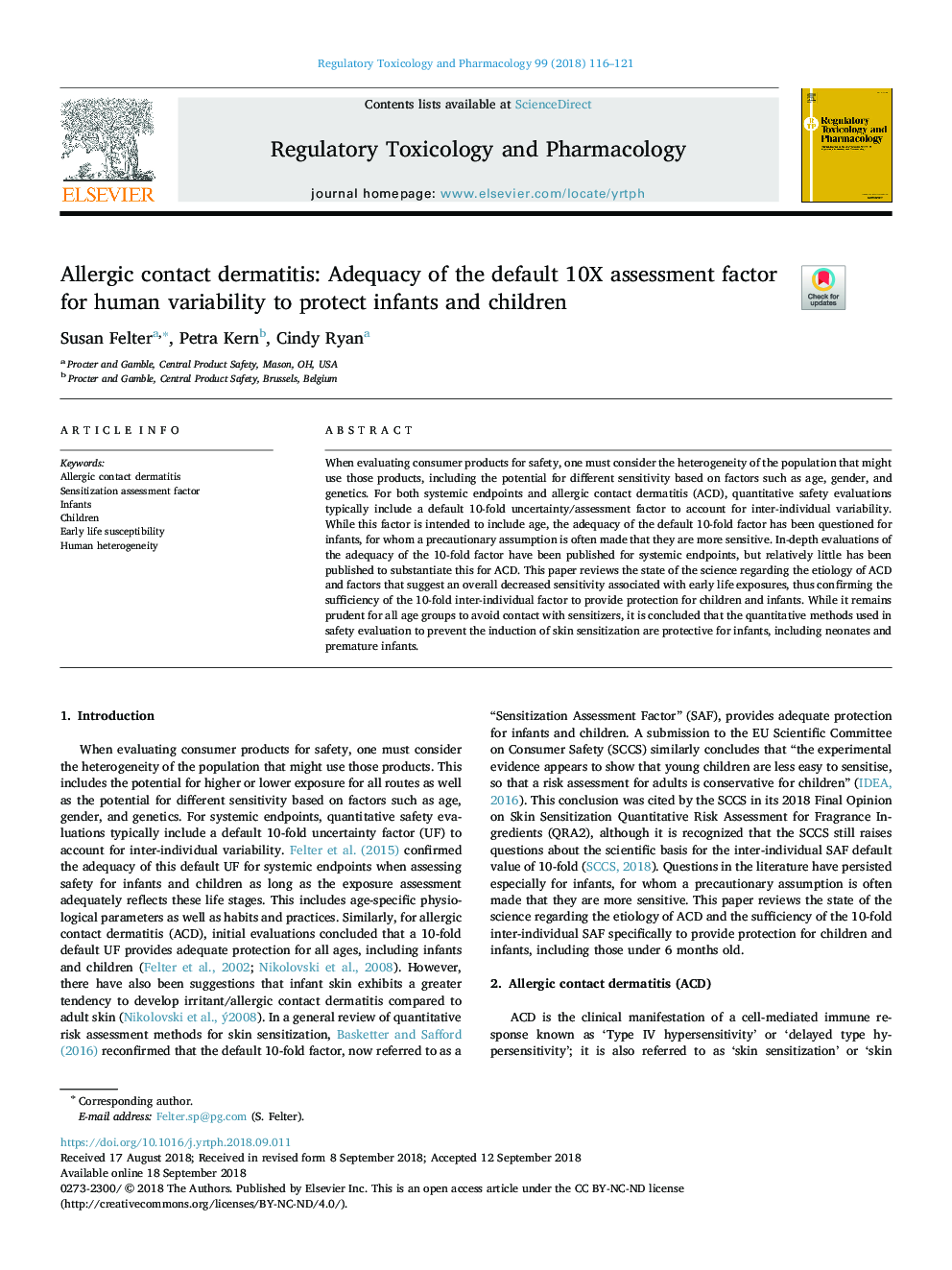| Article ID | Journal | Published Year | Pages | File Type |
|---|---|---|---|---|
| 11031883 | Regulatory Toxicology and Pharmacology | 2018 | 6 Pages |
Abstract
When evaluating consumer products for safety, one must consider the heterogeneity of the population that might use those products, including the potential for different sensitivity based on factors such as age, gender, and genetics. For both systemic endpoints and allergic contact dermatitis (ACD), quantitative safety evaluations typically include a default 10-fold uncertainty/assessment factor to account for inter-individual variability. While this factor is intended to include age, the adequacy of the default 10-fold factor has been questioned for infants, for whom a precautionary assumption is often made that they are more sensitive. In-depth evaluations of the adequacy of the 10-fold factor have been published for systemic endpoints, but relatively little has been published to substantiate this for ACD. This paper reviews the state of the science regarding the etiology of ACD and factors that suggest an overall decreased sensitivity associated with early life exposures, thus confirming the sufficiency of the 10-fold inter-individual factor to provide protection for children and infants. While it remains prudent for all age groups to avoid contact with sensitizers, it is concluded that the quantitative methods used in safety evaluation to prevent the induction of skin sensitization are protective for infants, including neonates and premature infants.
Related Topics
Life Sciences
Environmental Science
Health, Toxicology and Mutagenesis
Authors
Susan Felter, Petra Kern, Cindy Ryan,
